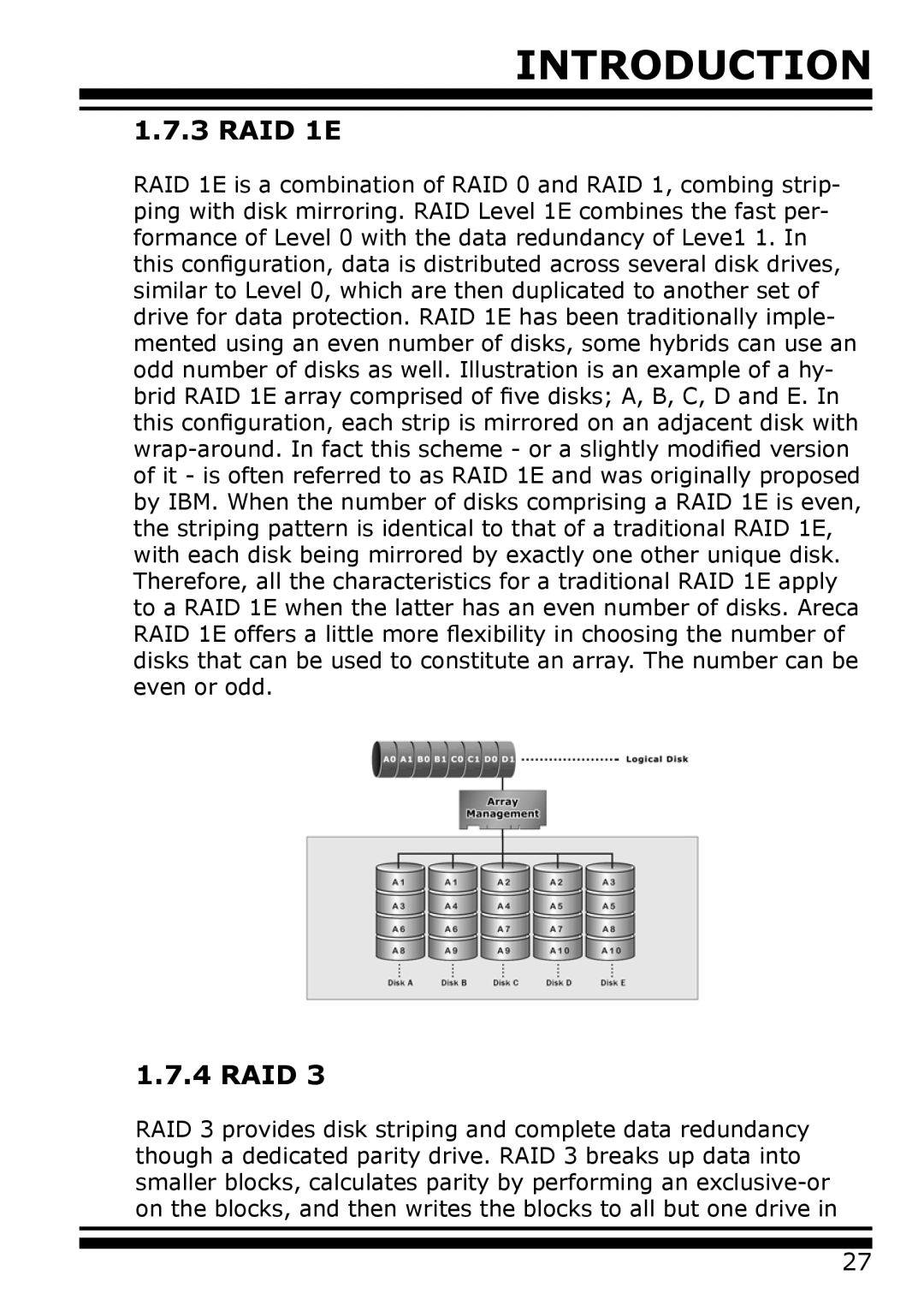
INTRODUCTION
1.7.3 RAID 1E
RAID 1E is a combination of RAID 0 and RAID 1, combing strip- ping with disk mirroring. RAID Level 1E combines the fast per- formance of Level 0 with the data redundancy of Leve1 1. In this configuration, data is distributed across several disk drives, similar to Level 0, which are then duplicated to another set of drive for data protection. RAID 1E has been traditionally imple- mented using an even number of disks, some hybrids can use an odd number of disks as well. Illustration is an example of a hy- brid RAID 1E array comprised of five disks; A, B, C, D and E. In this configuration, each strip is mirrored on an adjacent disk with
1.7.4 RAID 3
RAID 3 provides disk striping and complete data redundancy though a dedicated parity drive. RAID 3 breaks up data into smaller blocks, calculates parity by performing an
27
